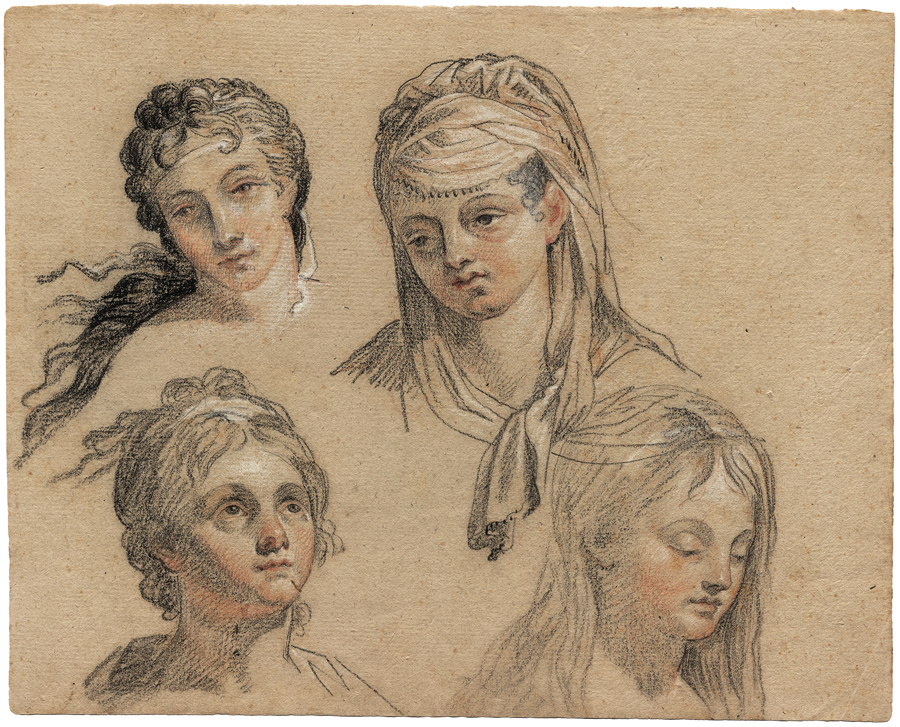Loading the page ...
Joseph Benoît Suvée
(1743 Bruges – 1807 Rome)
Female Head Studies. Coloured chalks on brownish paper, each sheet measuring circa 20.2 x 25.2 cm. One sheet signed: "Suvée". Circa 1770.
The fate of Joseph Benoît Suvée, a portraitist and painter of historical scenes, is typical of those artists who enjoyed abundant fame and recognition during their lifetime only to fall into oblivion soon after their death. Suvée had a remarkable career in France. In 1763 he began to study at the Paris Academy under Jean-Jacques Bachelier and in the summer of 1765 won the silver medal of that august place of learning. It is a measure of Suvée’s achievement that the bronze medal went to no less a figure than Chardin. In 1771 Suvée scored another succès d’estime when he triumphed over Jacques Louis David in winning the coveted Prix de Rome for his painting The Battle between Minerva and Mars (Lille, Palais des Beaux-Arts). From 1772 to May 1778 this ambitious artist studied as a pensionnaire under Natoire and Vien in Rome. In 1780 Suvée was admitted as a member of the Académie Royale, where he was given a professorship in 1792. Although he was appointed director of the Académie de France in Rome the same year he was not able to exercise that prestigious office until 1801.
As a painter Suvée was largely instrumental in spreading French artistic taste – that is to say the Neoclassicist style – to his native Flanders. These two charming study sheets represent an earlier stylistic phase, in which Suvée was still very much under the influence of a French Rococo-inspired Classicism. The subtle drawing technique aux trois crayons also makes clear how much Suvée owed to his French teachers. The original mise-en-page gives the sheets additional charm. Suvée has drawn these delightful heads with tenderness and sensitivity, paying great attention to the different coiffures. The gentle sweetness radiated by these female features is reminiscent of the refined Classicism of Angelika Kauffmann. It is probable that the studies originated in a sketchbook and were executed in the early 1770s. One of the girl’s heads shows clear points of resemblance with the lovely nymph who protectively takes the wounded Mars in her arms in Suvée’s Prix de Rome painting.
Contact us for further information